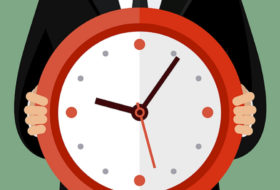Description
I strongly believe in 3 key ideas:
- #1) Education – learn about what matters to you
- #2) Coaching – practice and embody that learning
- #3) Leadership – show up "fully and in presence" with others
Every section in this course is connected and invites you to embody the learning. Each section has some “Action Steps” or “Activity” to help you notice what shows up for you as you to interpret and get to the story of the emotions that you experience.
The more you can practice and apply what you learn in the sections determines the results you'll get.
Section #1 – “Welcome To The Course” – Quickly get started in this section with this short introduction to “Emotional Intelligence And Emotional Mastery” and the two foundational models of the O-A-R and the B-E-L. You are the unique observer of your life. And the unique observer you are has a Body, experiences Emotions and interprets those emotions in Language. There is also an invitation to join the private Facebook group called, “Life Coaching And Vedic Counseling”.
Section #2 – “Before You Begin – A Brief Introduction To Emotions” – Emotions have been studied for as long as humans have been alive. It wasn’t until about 1649 and Descartes’, “Les Passions des l’Ame” that emotions have been reduced and classified into “basic” emotions. Other psychological studies include Dr. Paul Ekman’s “6 Basic Emotions” and Dr. Robert Plutchik’s “Wheel Of Emotions.” Learn to distinguish between what it means to “have emotions” versus “being emotional.” This skill is crucial for developing your emotional intelligence.
Section #3 – “Getting To Know Yourself – Part 1 – Your Emotional Inheritances” – The bulk of the worksheets and self-reflection exercises are in this section. This is where you are invited to spend as much time as possible to understand what makes up that “framework of belief” that your unique observer operates under. This framework was built throughout your life from ALL of the life experiences you had. What were those? Who were those individuals responsible? The more clearly you can articulate this, the greater your results.
Section #4 – “Getting To Know Yourself – Part 2 – Moods And Their Influence” – What is the difference between “moods” and “emotions”? Well, it’s mostly a matter of time! Emotions are triggered by events; they are mostly immediate. Moods, on the other hand, are emotions that persist for longer periods of time from hours to decades! What are the moods that you bring with you? Do you know the 4 basic moods? Learn to move from the moods of Resentment and Resignation to something more productive in your life.
Section #5 – "Bust A Move – Learning To Give Yourself A Break From Mental “Chatter”" – No matter if we keep our mouths shut or open, we are ALWAYS in conversation! We either have a chattering internal loop or we are interacting with others! STOP this noise by moving your body. Here you will learn about the 5 body dispositions and how they cause us to experience certain emotions. Once you learn to move your body in an appropriate way to get satisfactory results, then you have a powerful tool to work with your emotions. The activities in this section invite you to practise moving your body into these dispositions.
Section #6 – "Declarations And How To Bring Joy And Satisfaction Into Your Life" – Declarations are at the heart of creating a life of meaning, value and satisfaction. Declarations are a speech act and have certain properties that allow you to use the generative power of language to create that “hoped for future” in your life.
Section #7 – “Approaching Resentment & Resignation With Lightness And Curiosity” – The moods of Resentment and Resignation can be particularly “heavy.” This section is about introducing the emotions of lightness and curiosity to work with these moods. Each of lightness and curiosity allow you to work with these moods and look at them from different perspectives. Activities in this section invite you to visualise and imagine just what it would be like for you to be in “lightness” and “curiosity.”
Section #8 – “Looking Ahead To Create A Satisfactory And Joyous “Hoped For” Future” – Creating that “hoped for” future is at the heart of the coaching relationship. Just what is it that you want to create in your life? Which areas of family, friends, career, community and more do you want that “hoped for” future?
Section #9 – “Life Is Meant To Be Lived Joyously… Stepping Lightly And In Joy” – We wrap up this course with the invitation to consider that life is meant to be lived joyously. The action steps are summarised here which invite you to #1 notice and #2 keep practising the skill of noticing. Then you can move into the investigative part of understanding the linguistic foundations of emotions and the associated body shapes that will allow you to take control of the situations, events and conversations in your life!






Reviews
There are no reviews yet.